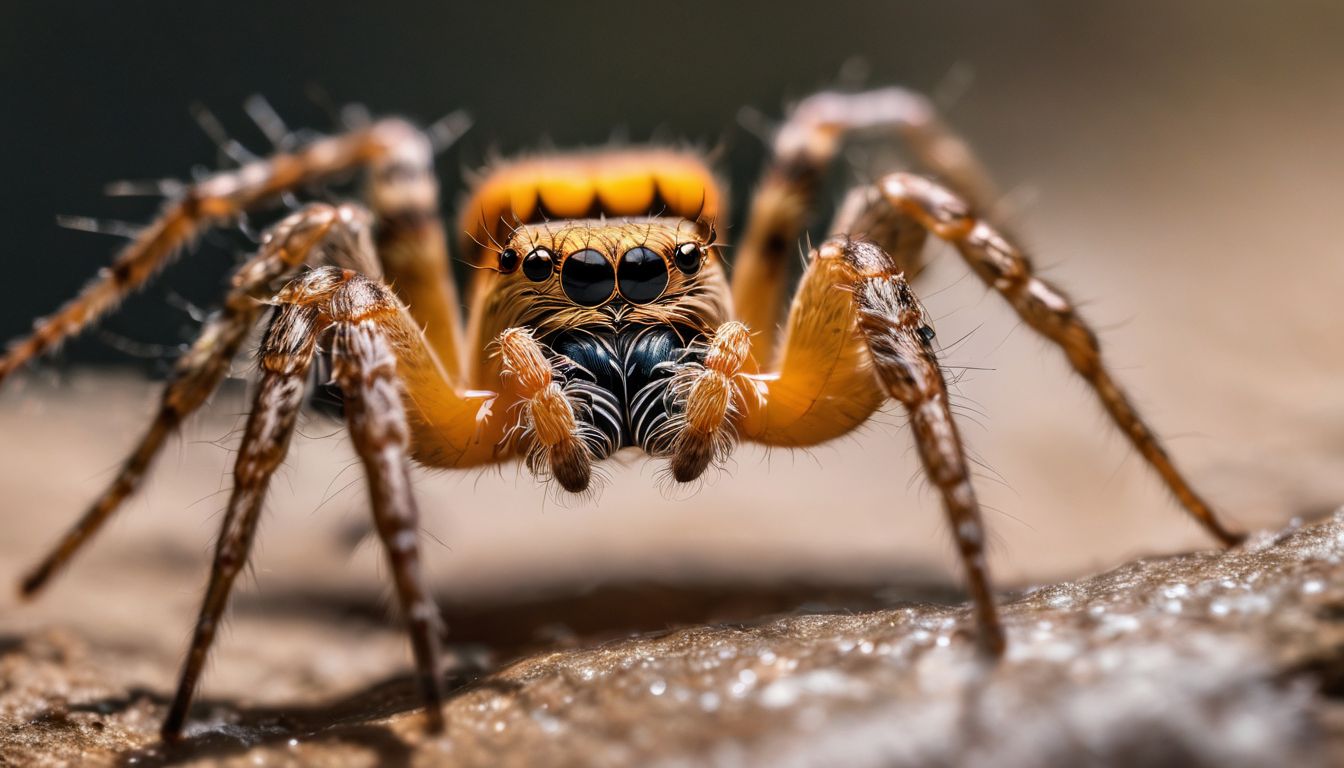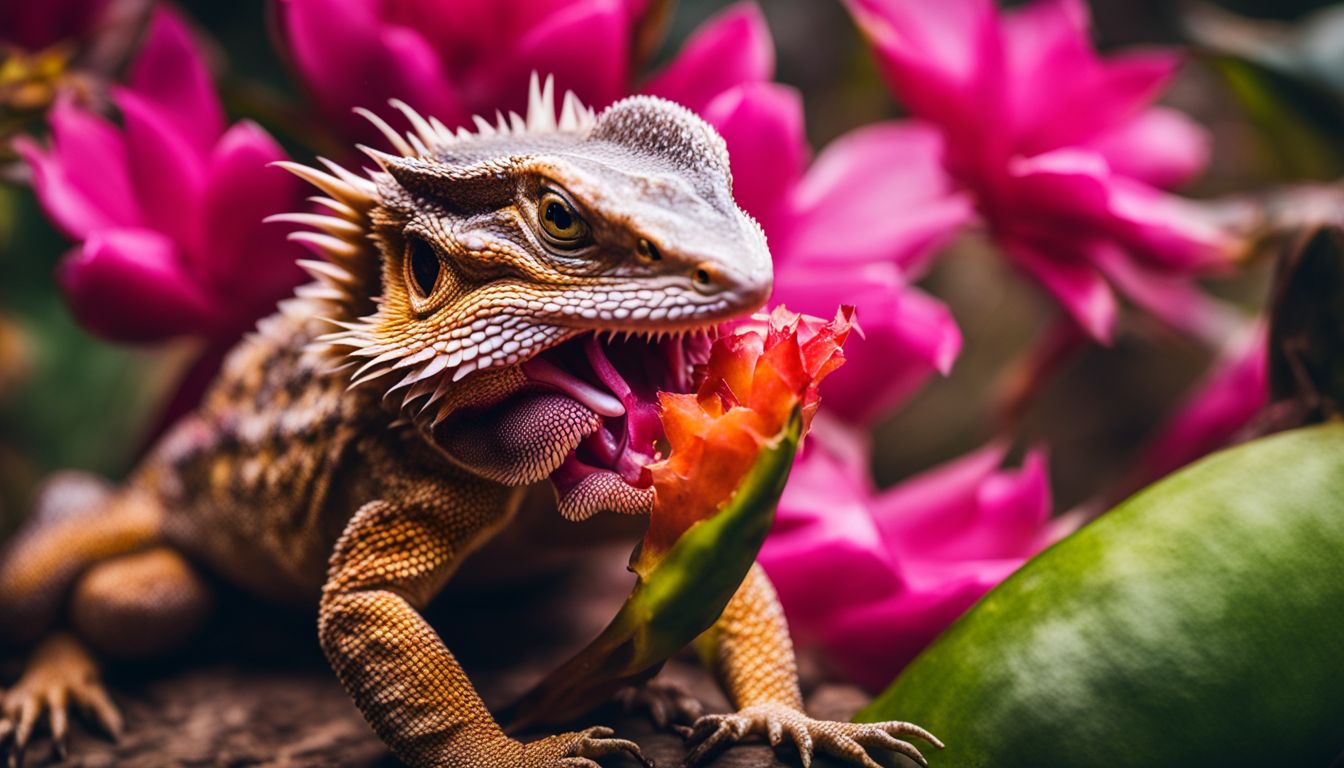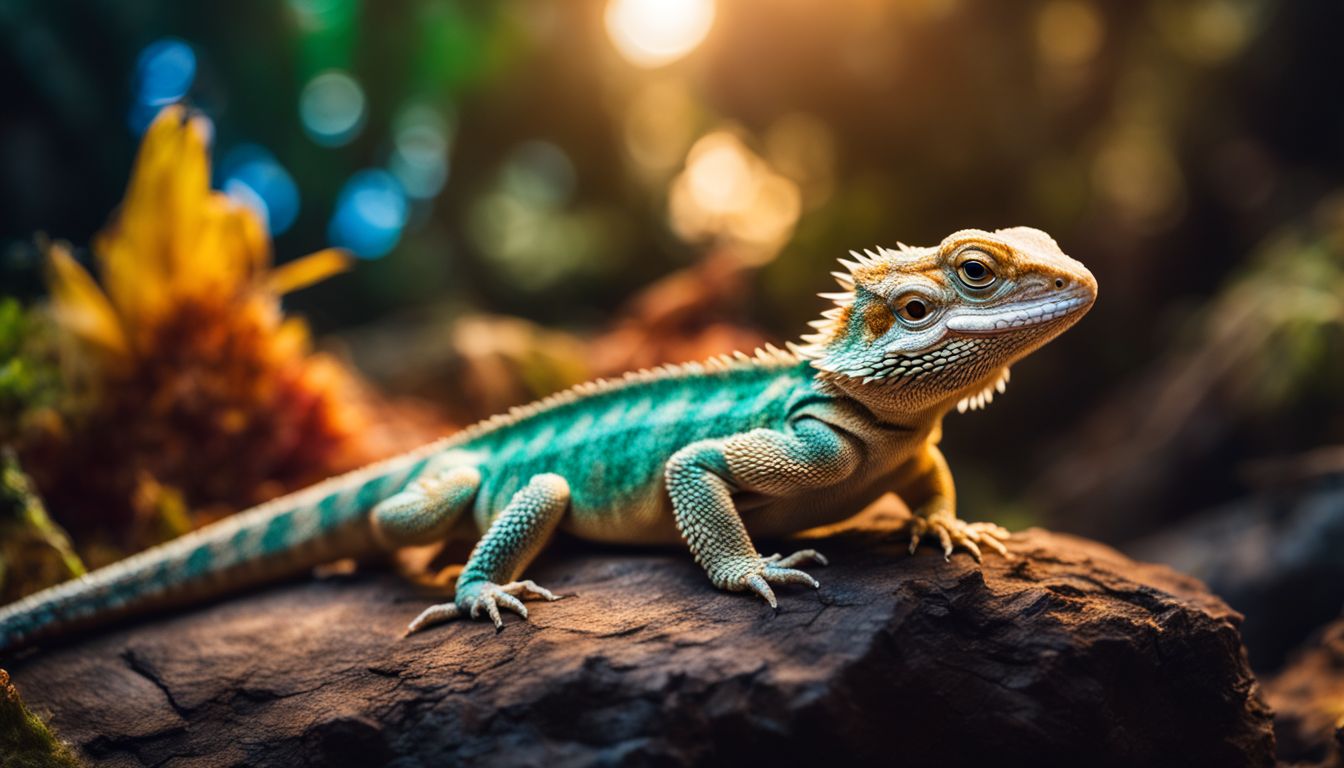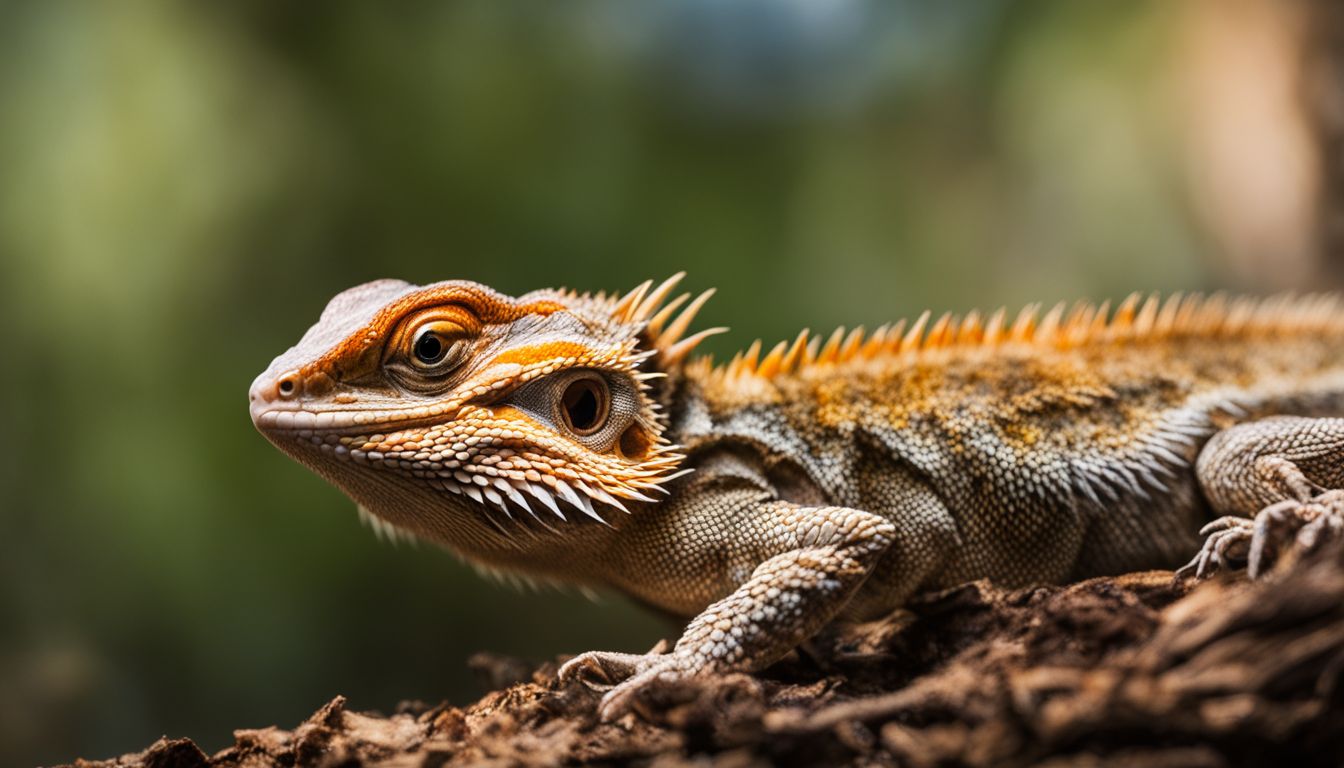Have you ever spotted a spider hanging around your home and wondered how long it could survive without catching any bugs? Surprisingly, spiders have the remarkable ability to go without food for extended periods – some can even fast for months! Our blog post delves into the fascinating world of spiders and uncovers their survival secrets when meals are scarce.
Get ready to discover amazing spider facts that’ll stick with you longer than a web in a breeze!
Key Takeaways
- Spiders can survive without food for varying durations, influenced by species, size, metabolic adaptations, and environmental conditions.
- Factors such as low metabolism, stored nutrient utilization, and opportunistic feeding behaviors enable spiders to endure extended periods without consuming prey.
- Extended fasting can impact spider longevity and reproduction by decreasing activity levels, influencing web-building behavior, and potentially reducing reproductive success.
Understanding Spider Lifespan and Life Cycle
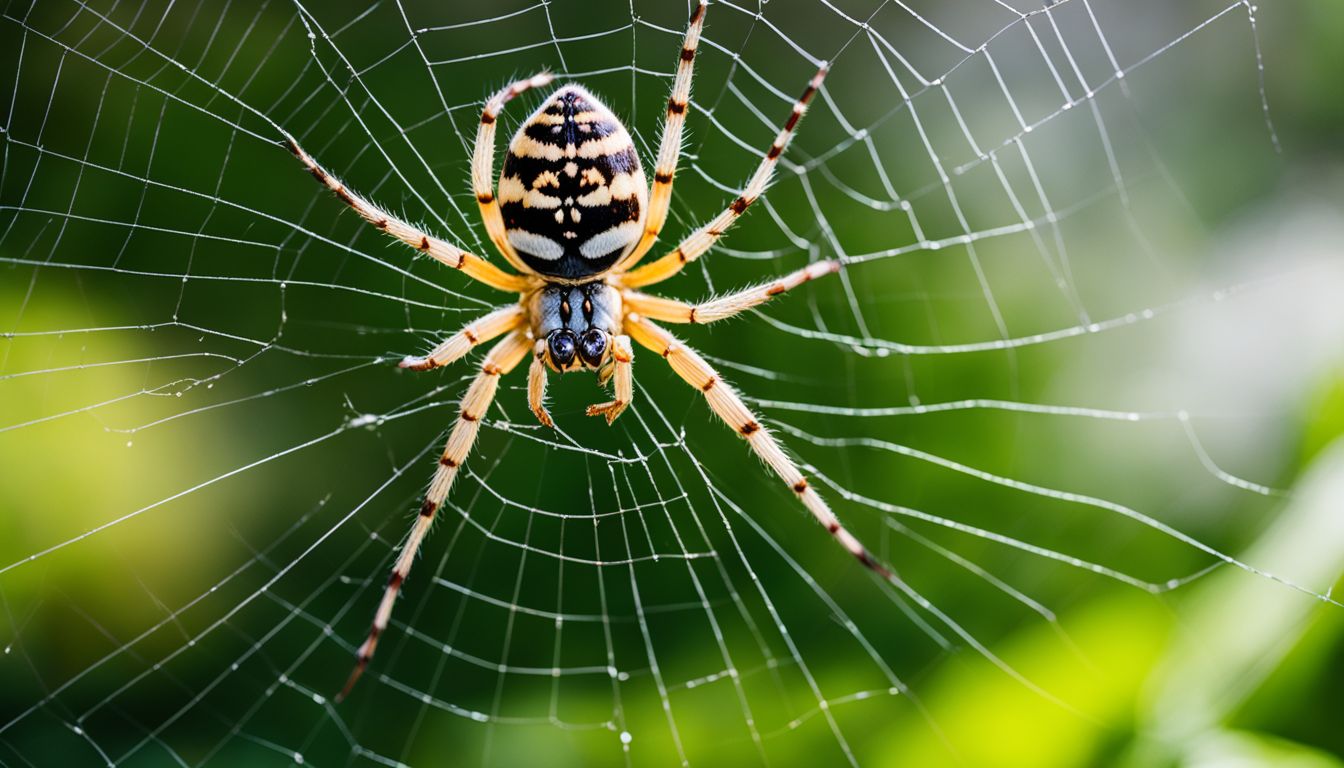
Spiders have a wide range of lifespans, depending on the species. From tiny spiderlings to large tarantulas, each stage in the spider life cycle is crucial for their survival and reproduction.
Understanding these key stages can provide valuable insights into how long spiders can go without food.
Average Lifespan of Common Spiders
Understanding the average lifespan of various spider species provides insight into their survival capabilities. Lifespans vary widely among different types of spiders. The data below offers a glimpse into the expected longevity of some common spiders under optimal conditions.
| Spider Species | Average Lifespan |
|---|---|
| House Spiders | About 1 year |
| Orb-Weaver Spiders | 1-2 years |
| Jumping Spiders | Up to 1 year |
| Wolf Spiders | Several years (females) |
| Tarantulas | Up to 20 years (some species) |
This table highlights only a fraction of the vast diversity found within the arachnid world. It’s important to note that these figures represent general estimations, and individual spider lifespans can be influenced by a multitude of factors, including environmental conditions and the availability of food sources.
Key Stages in the Spider Life Cycle
Spiders go through a lot in their lives before they become the eight-legged creatures we see. The journey from egg to adult involves several important steps.
- Eggs: This is where it all begins. Spiders lay eggs, which are often wrapped in a silk egg sac to protect them from predators and harsh weather. Some spiders like orb spiders can lay hundreds of eggs at one time.
- Spiderlings: Once the eggs hatch, out come tiny spiderlings. These little guys look like small adults but they need to grow. They do this by shedding their skin, a process called molting. Some spiders will molt many times before they become adults.
- Adulthood: After the last molt, spiders are considered adults. They’re now ready to make webs, hunt for food, and start the cycle all over again by laying eggs of their own. For example, a wolf spider can live up to two years as an adult.
The Spider’s Ability to Survive Without Food

Spiders have the remarkable ability to survive for extended periods without food. Factors such as species, environmental conditions, and metabolic adaptations play a significant role in determining how long spiders can go without eating.
Factors Influencing Survival Duration
Many things can change how long a spider can live without food. Big spiders usually go longer without eating than small ones; some can last many months like the wolf spider, living up to 208 days, and Filistata spiders, surviving for 276 days.
Their low energy use when resting helps them wait a long time for their next meal.
A spider’s web tells us about its health too. When they don’t have much time left, they make smaller webs with less silk. This shows that going without food affects how a spider moves and makes webs.
Next, let’s explore the special ways spiders’ bodies help them deal with not having much to eat.
Comparison of Survival Times Across Species
Spiders exhibit remarkable variability in how long they can survive without food, and this largely depends on the species in question. The table below presents a comparison of survival times across various spider species, highlighting this diversity.
| Species | Average Survival Time Without Food (Days) |
|---|---|
| Wolf Spider (Lycosa lenta) | 208 |
| Cribellate Web-builder (Filistata) | 276 |
| Common House Spider | Varies (Generally less than 200) |
| Orb-Weaver Spider | Varies (Generally 100-180) |
| Jumping Spider | Varies (Generally less than 100) |
These survival times highlight the unique adaptations of each species. The wolf spider, for example, can go for over half a year without a meal, showcasing its resilience. Conversely, jumping spiders typically have shorter fasting endurance. Spiderlings also demonstrate an ability to endure lengthy periods without food, nearly matching the adult spider survival lengths. This capacity to withstand starvation underscores the efficiency of spiders’ survival strategies.
Metabolic Adaptations of Spiders
Spiders have low metabolism, which helps them conserve energy and survive for longer periods without food. They also exhibit opportunistic feeding behaviors and can utilize stored nutrients to sustain themselves.
Low Metabolism and Its Role
Spiders have a low metabolism, which means they don’t need as much food or energy as other bugs. This helps them survive longer when there’s not much food around. Their bodies can slow down and conserve energy by up to 30% when they’re hungry, allowing them to wait out periods of little food.
This unique ability helps spiders adapt to times when it’s hard to find something tasty to eat.
Opportunistic Feeding Behaviors
Spiders have unique feeding behaviors, being opportunistic predators that adapt to various prey. For instance, tarantulas are known for their flexibility in hunting and can feed on a wide range of animals.
Spiders exhibit smart foraging strategies to acquire the nutrients they need, rather than just focusing on energy intake. They also show changes in eating habits during winter when food may be scarce and display metabolic adjustments to maintain their energy balance.
Utilizing these adaptive features allows spiders to survive and thrive even in challenging conditions. Now let’s delve into how spiders utilize stored nutrients for sustenance.
Utilization of Stored Nutrients
After spiders consume a meal, they have the ability to store excess nutrients for later use. Spiders can convert and store these nutrients in the form of lipids and proteins within their bodies.
During periods of food scarcity, spiders utilize these stored nutrients to sustain themselves. This adaptation allows them to survive extended periods without food by gradually breaking down these stored reserves to fuel their metabolic processes.
These stored nutrients serve as a critical energy source that enables spiders to endure prolonged periods without consuming prey.
Implications of Starvation for Spiders
When spiders go without food for an extended period, they may exhibit physical and behavioral changes such as decreased activity, web building, and reproduction. The impact of starvation on spider longevity and reproductive capability is significant.
Physical and Behavioral Changes
Spiders can go for long periods without food, and during this time, they may become less active. Their movements may slow down, and they might spend more time resting in one place.
However, spiders can adapt to scarcity of food by reducing their metabolic rate to conserve energy. Some species also change their web-building behavior when hungry, focusing on constructing webs that are better at catching prey or even becoming more aggressive hunters themselves.
Understanding how spiders cope with hunger provides valuable insights into their survival strategies and the ways they maintain their populations in various environments. Next, let’s delve into how starvation impacts the longevity and reproduction of spiders.
Longevity and Reproduction Impact
Spiders’ ability to survive without food has a significant impact on their longevity and reproduction. When spiders go without food for extended periods, it can affect their energy levels, making them less active and reducing their ability to mate and reproduce.
This prolonged fasting can also influence the number of eggs a female spider produces, potentially diminishing the size and viability of the offspring. The longer they go without food, the more it can hinder their reproductive success.
Furthermore, as spiders require sufficient energy reserves for successful mating and egg production, extended periods without food may lead to reduced reproductive output. It’s crucial for spiders to maintain optimal energy levels through regular feeding in order to support healthy growth and reproduction within their populations.
Conclusion
In conclusion, spiders have impressive survival skills and can go without food for various durations based on their species and living conditions. Understanding these abilities helps us appreciate the remarkable adaptability of these creatures.
Whether they’re indoors or outdoors, spiders demonstrate unique strategies to endure periods without a meal. Their ability to survive for weeks or even months without eating showcases their resilience in different environments.
Discover more intriguing arachnid behaviors by exploring whether spiders can get high on our dedicated page.
FAQs
1. How long can spiders go without eating?
Spiders can live for a long time without food. Some, like the tarantula, might not eat for more than a month.
2. What do most spiders eat?
Most spiders are predators that catch and eat insects such as flies, mosquitoes, grasshoppers, and crickets with their sharp chelicerae.
3. Can any spiders live on plants instead of bugs?
Yes! While it’s rare, some plant-eating spiders like the golden orb spider might sip nectar or honeydew from plants instead of hunting insects.
4. Are all spiders meat-eaters?
Almost all spiders are carnivorous and hunt other small creatures but a few may occasionally eat plant sap or seeds if they have to.
5. Can daddy long legs survive without insect prey?
Daddy long legs can go for quite some time without eating insects since they don’t need much food to live because of their small size and slow metabolism.
6. Do web-building spiders need to catch pests often to stay alive?
Web-building arachnids like the black widow spider make sticky webs to trap pests such as flies or mosquitos; however, they don’t need to catch something every day – they can wait patiently for their next meal.

